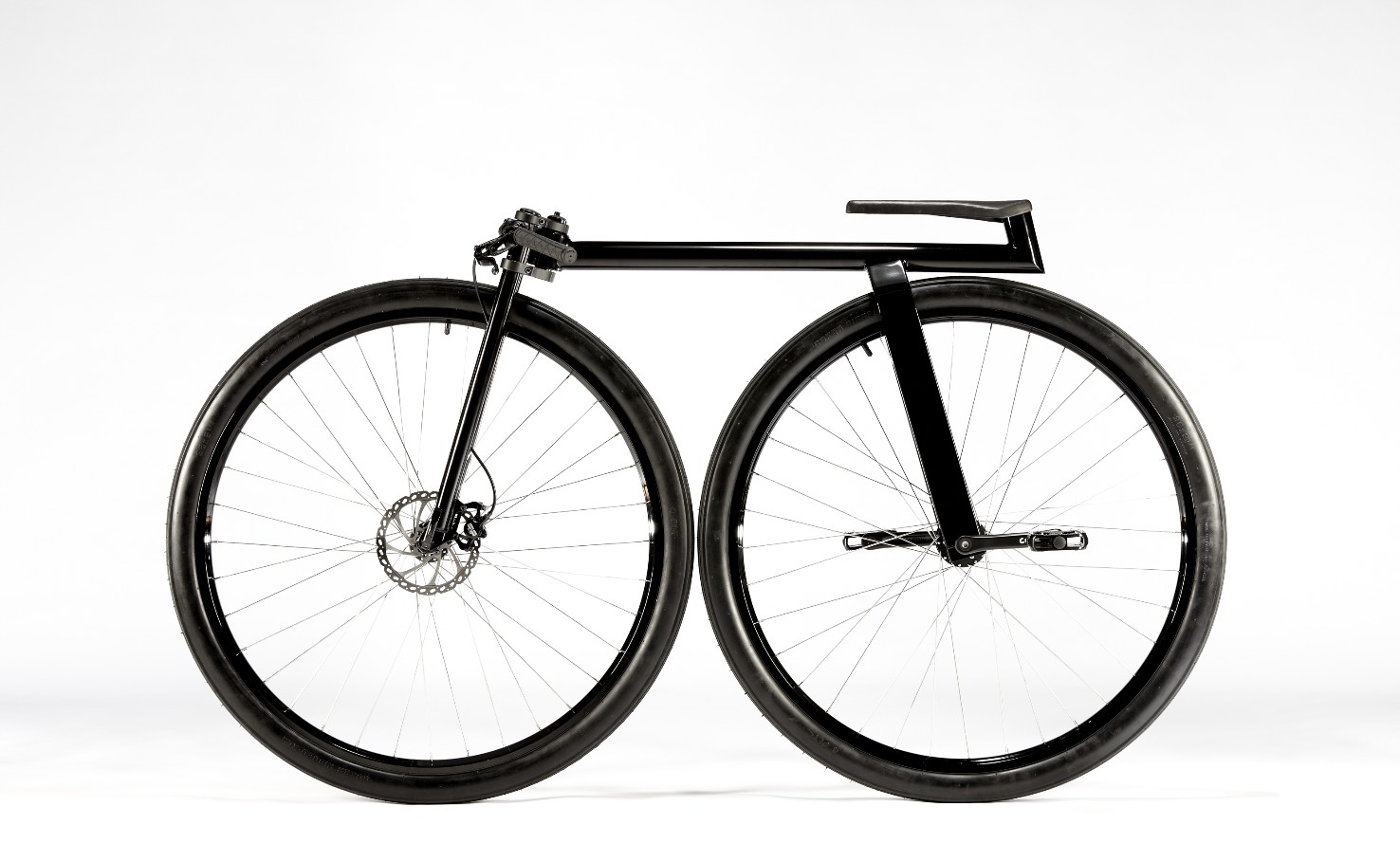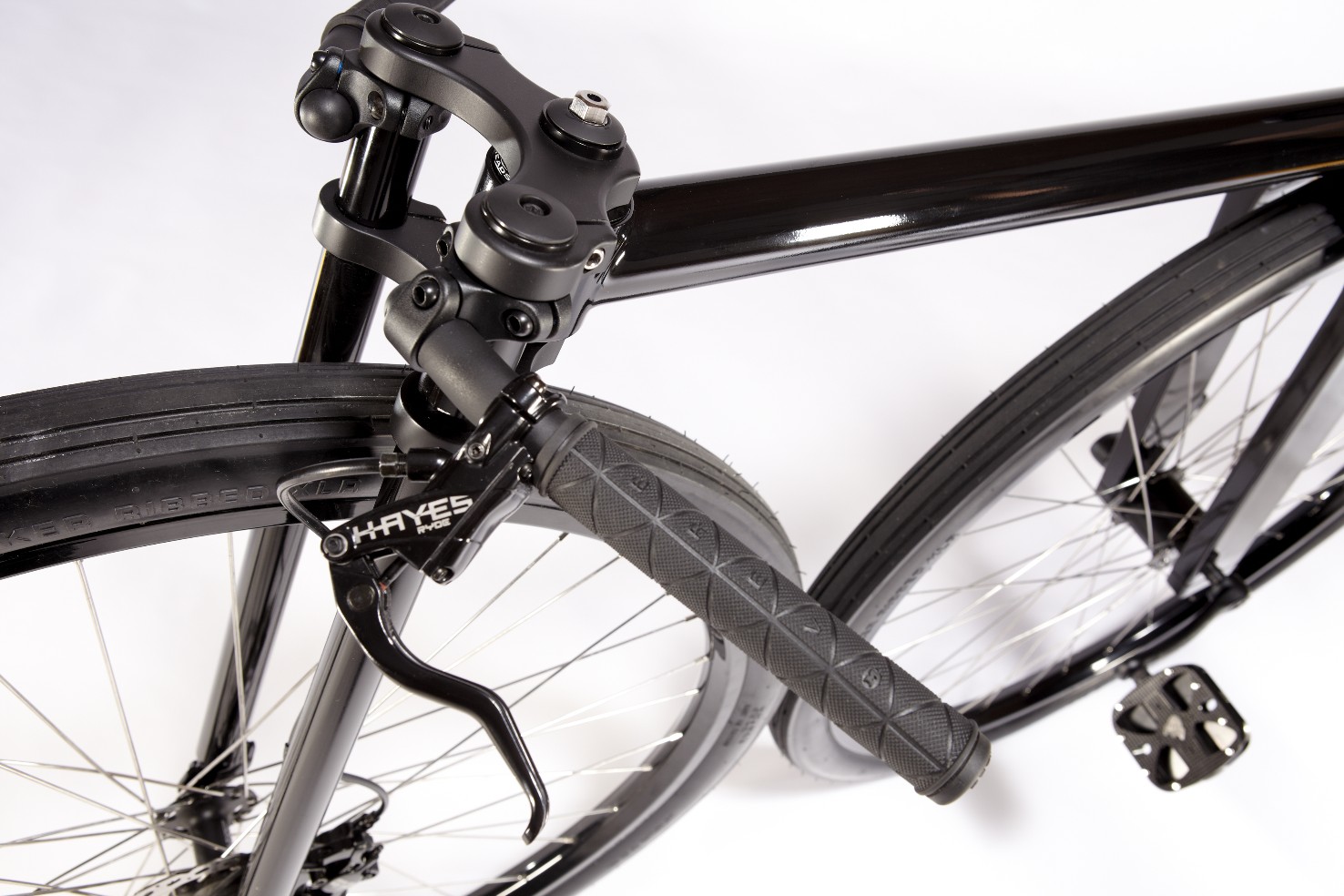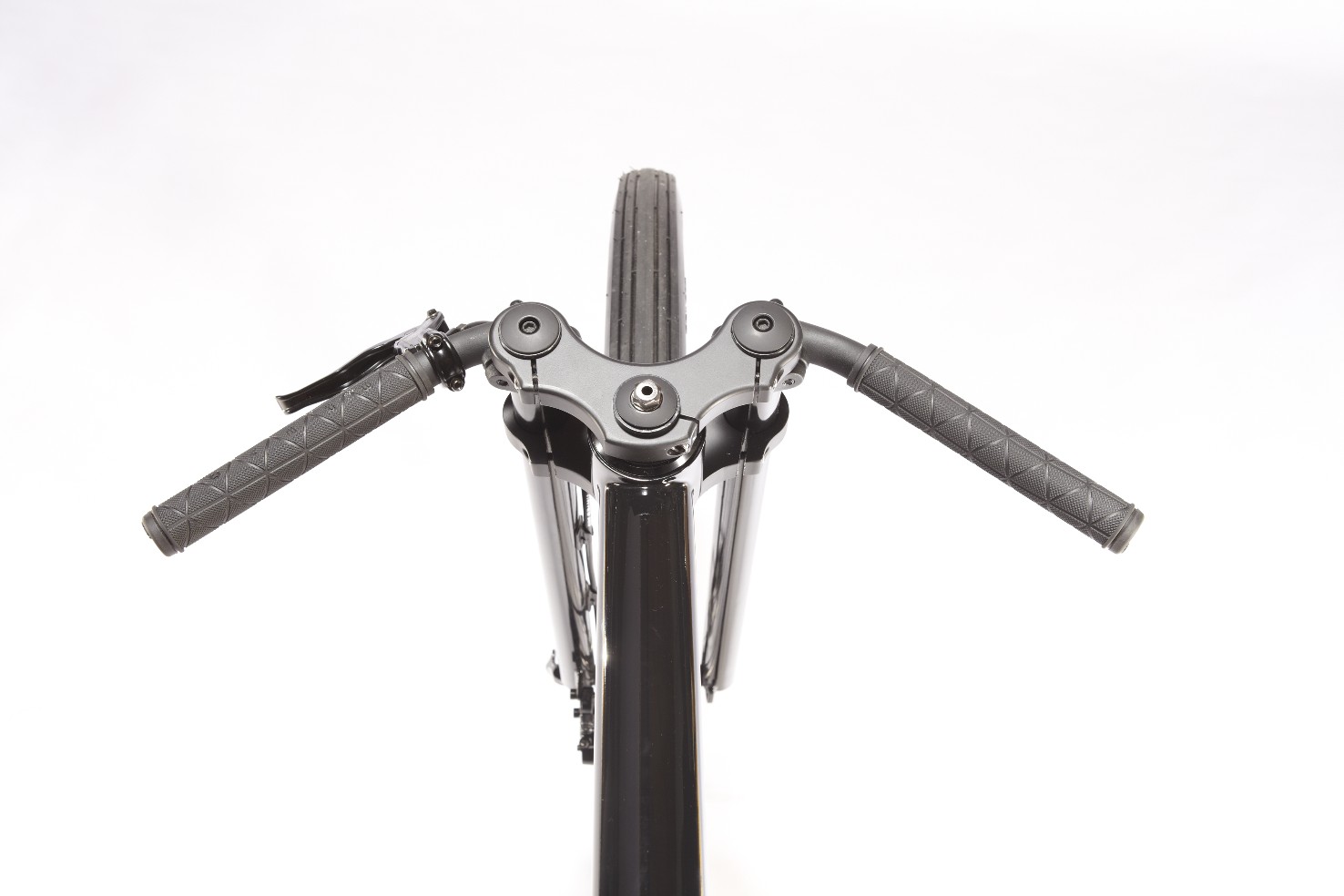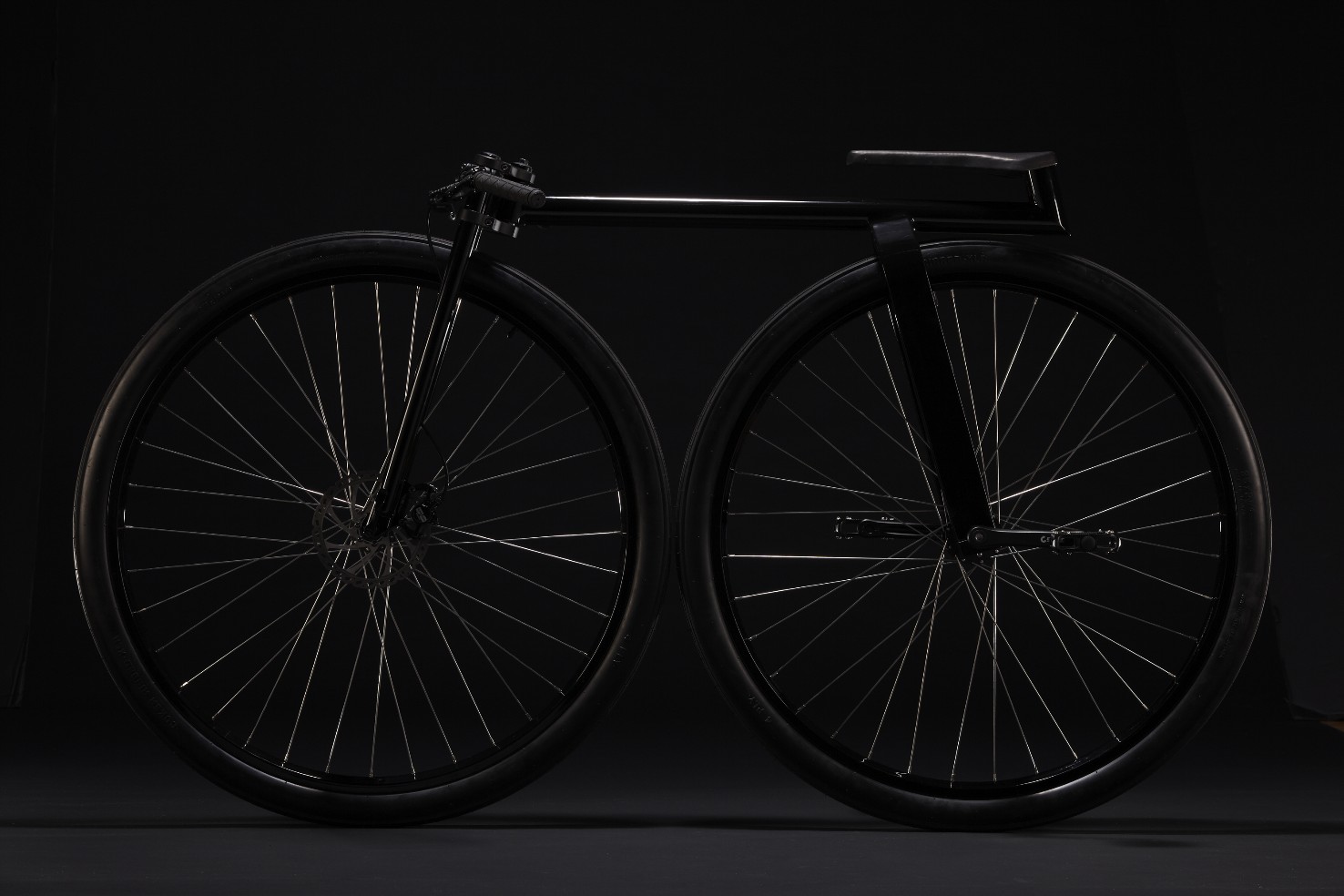The inner city bike was designed by JRUITER + studio as a project asking questions about ultra short inner city travel. What is needed, who is riding, and how far are they going. At first glance it was a fun aesthetic opportunity in new trends, color, and materials. The target lived / worked in an inner city environment with minimal space. Bicycling at this level can be more about fashion and culture than speed and performance.
The initial inner city bike was inspired by the “hobby horse” from it’s simplicity and the motorcycle cafe racing culture. Each is an exercise in stripping something down to its core. As it evolved, the design triggered a shift in time, spurring the questions, “Is there an opportunity to change a timeless product?” “Can we go back and try something new?”
The inner city bike rethinks what a “frame” is, getting rid of basic key components, and creating a new type of urban bicycling.
Before all of the bike fanatics get all fired up, they know this bike doesn’t solve everyone’s personal transportation dreams. Consider it a cafe racer with the performance of a beach cruiser. The positives are easy quick turns, huge power to the rear wheel to go over curbs and up hills, and great start / stopping / sitting situations.
This is what Joey Ruiter has to say : " The Inner City Bike is how I’m starting a conversation about new products and how they change the world. The bicycle is iconic. Throughout its history, its design has evolved. Big wheels, small wheels, even the number of wheels. It’s been made of wood, metal, and plastic. Is there room for another take on the bike? Can we re-define classic objects? I think so.
It is about simplicity in design. The Inner City Bike is the ultimate stripped away piece. So stripped even the chain is gone. Its a statement on bare essential transportation and new ways of thinking about materials, scale, manufacturing processes and function.
For me, the art of design happens when you change the way things are perceived, when a new word is coined to express what you’ve done. It challenges conventionality and creates new stories, interactions and rarity we strive for."

























